After a slow trickle of information over the last few months, the floodgates of M15 spoilers finally opened over the last week and we’ve been buried under a deluge of new cards. It’s good timing, too, as the results of last weekend’s Grand Prix Chicago certainly don’t give us anything new and interesting to talk about, with five black devotion decks, two U/W Control decks and one blue devotion deck in the Top 8.
As has been the case for every spoiler season since Theros, I am tempering my enthusiasm for any of the new cards because there’s only so much of an impact that anything can have in a world of Thoughtseize and the like. That said, there are definitely some cool things going on in the new set, and I want to take a look at some of the most exciting cards that have caught my eye.
Before I get into the card-by-card examination, though, I want to touch briefly on the “Guest Designer” cards. From a marketing perspective, I can certainly see how these cards have value. I’ve seen a lot of people criticize the idea that these could possibly reach an audience that isn’t aware of Magic already, but that’s not really the whole point. There are a lot of people who have played Magic in their lives who don’t play today – the lapsed Magic player is perhaps an equally-significant target demographic as those who have never played the game.
If someone who played Magic when they were younger moved on to play a game like Minecraft or World of Warcraft and sees an article about a card made by the designer of their new favorite game, there’s a reasonable chance they might take a look at it and maybe even give Magic another try. It’s especially important that these guest designer cards are generally very flavorful and unusual, because they can evoke the kind of excitement that a lot of players felt when they first got into Magic.
All that said, as a longtime current player, the guest designer cards kind of grate on me. I can appreciate the value that the guest designer credit on the card brings to marketing, but it feels like an imposition to existing players that takes space that could be used for something cool like flavor text. It also breaks the fourth wall and ruins the immersion that the name and the art and the overall story of the cards work to create – in particular, I think, because it’s included in the same position and font and italics that flavor text normally is, so a player looks there for some kind of exposition on the story of the card and sees a design credit instead.
I recognize that not every element of every card is always going to appeal to every player. I can see the positives that come from these guest designer cards even if I don’t particularly like them myself.
I have seen a number of people questioning whether this kind of tactic ought to be used to allow the World Champion or Player of the Year to design a card, but I don’t really think that’s a great idea. You end up with a lot of the same negatives without the benefits of exposing Magic to a wider audience. Now if we got something like the Invitational prize that lets the player design a card and be featured in the art, that would be a different thing, but as I understand it there’s a lot of resistance from the art department against depicting specific people. I know that I’d love to win that prize more than the cash from a PT or Worlds win – I always wanted to win the Invitational more than anything back in the day – but I’m not sure that’s something we will see again.
Anyway, enough about that… let’s move on to the cards themselves.
Let’s start with the mythic rare “Souls”:


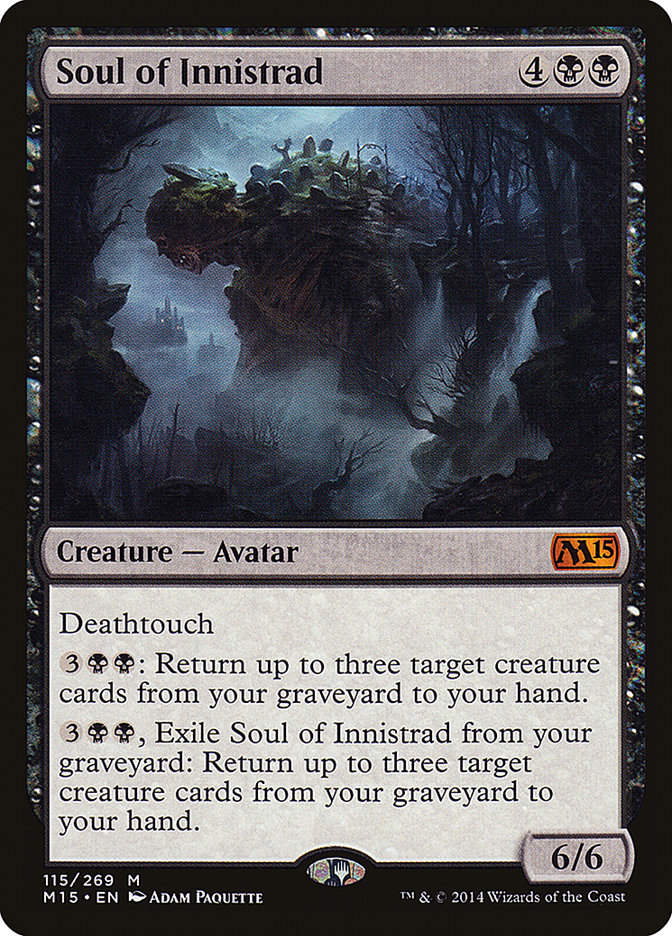
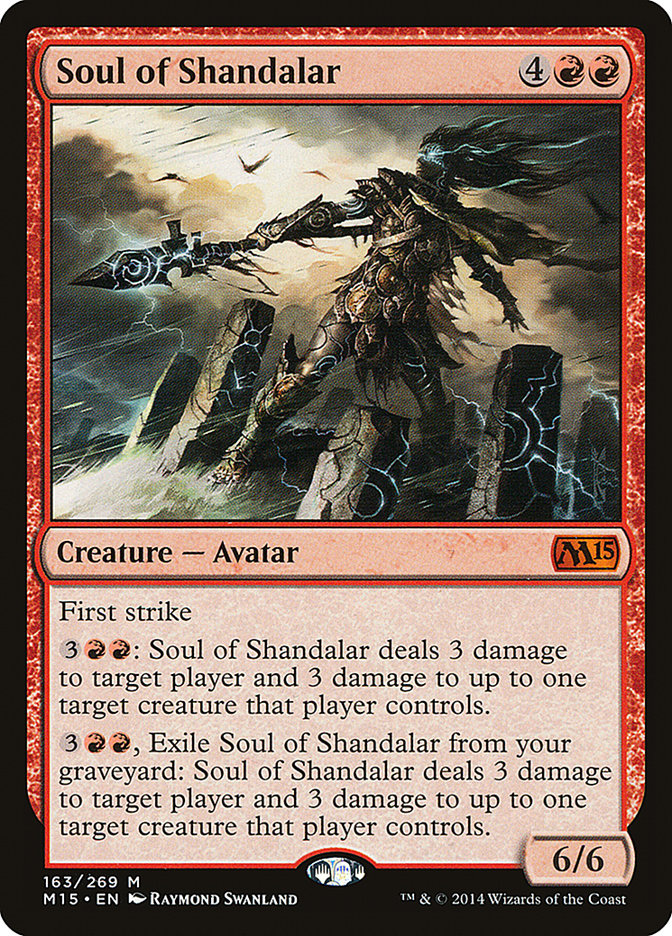
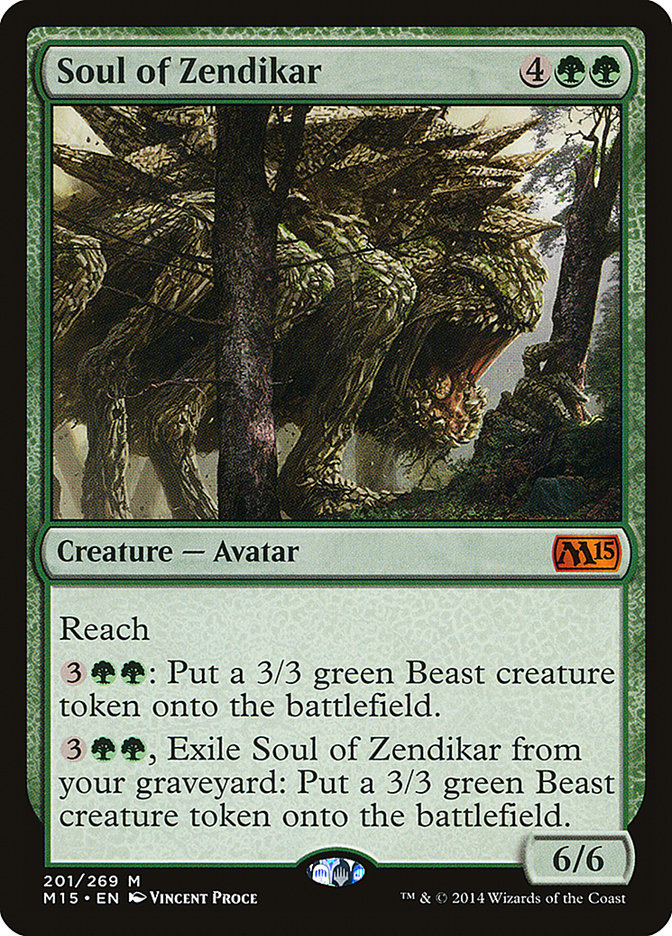
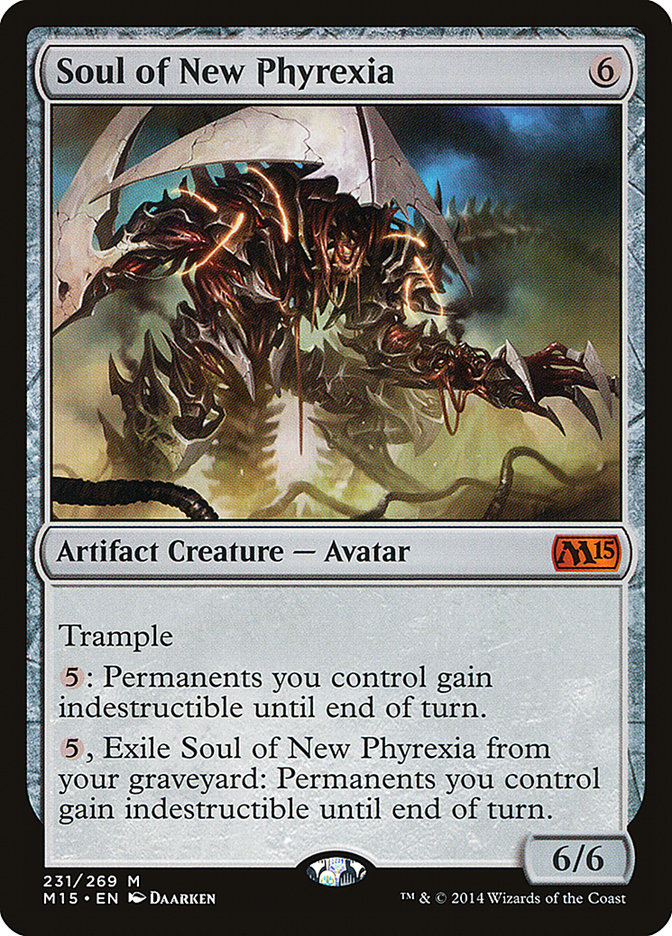
This cycle obviously calls back to the Titans, though they’ve been substantially “fixed” from their predecessors – and this sense of “fixed” is similar to that of a dog, in that they’ve had a lot of the exciting parts cut out. The design goal of each of these cycles is clearly to make exciting big creatures that can still provide their user with some amount of value even if they get killed immediately; “dies to Doom Blade” is the biggest fear of anyone investing a bunch of mana into a large individual threat. In the case of the Titans, we got powerful enters-the-battlefield triggers to give them an impact even if they died right away, while on the Souls we have activated abilities that can be used even while they are in the graveyard.
Generally speaking, a free enters-the-battlefield trigger is more attractive than a mana-intensive activated ability from the graveyard, but the Souls can also use their abilities while they are in play, and most of the effects are more powerful than what we got out of the Titans. Just like with the Titans, though, the Souls have a pretty wide band of power. Just like Twiddle Titan wasn’t quite as impressive as Search-for-lands-that-kill-you Titan, I don’t think Soul of Font of Return is going to have quite the same impact as Soul of Searing Blaze, but it really depends on what the format ultimately looks like. I could certainly see Soul of Innistrad being a major player in a format that is heavily attrition-based, much like Frost Titan made a big impact in a world that was heavily defined by the Titans themselves.
The power of everything in Magic is contextual, and it’s important to remember that whenever you’re evaluating new cards. Something that isn’t all that great right now could absolutely take over with a slight shift in the metagame or in the cards available. Remember when everyone was celebrating the fall of Primeval Titan when Valakut rotated out of the format? One Kessig Wolf Run printing later and Prime Time took down two more Pro Tour trophies – which I can’t really complain about, even if I always hated the card, since one of them is sitting on the shelf right behind me.
That said, it’s hard for me to imagine the Souls having a huge impact on the current Standard format. Sphinx’s Revelation puts a hard cap on how effective attrition-based strategies can really be, and at the other end of the spectrum, Mono-Red and Mono-Blue Devotion can punish anyone who is messing around too much in the early game. Even Mono-Black Devotion, the deck that falls the most into the attrition camp, can still close out games quickly with Pack Rat and Desecration Demon, making it hard to rely too much on a plan to go long.
The abilities of the Souls seem to lend themselves to be played in decks that have the ability to dump them into their graveyards for free. I could see G/B Graveyard decks trying out Soul of Innistrad, perhaps, though they generally don’t lack in late-game power thanks to Jarad and Nyx Weaver. Soul of Zendikar seems somewhat unexciting as a one-shot graveyard effect, though a repeated-use token maker is much more powerful when it’s actually in play.
The most exciting of the lot, in my mind, have to be Soul of Shandalar and Soul of New Phyrexia. Soul of Shandalar has a very powerful effect that doesn’t ask much of the player’s own board position, unlike Soul of Theros or Soul of Ravnica, and has an immediate board impact of its own, unlike Soul of Innistrad. Soul of New Phyrexia offers an extremely powerful ability to answer board-sweeper effects (or almost any removal, really) to any color that wants it, and all it requires is that you have permanents – not just creatures – in play that you’d like not to die. It’s especially potent if you can discard it in response to some kind of expensive board wipe effect as a surprise – maybe in some kind of Lotleth Troll deck?
My guess is that the Souls won’t have an immediate impact when they’re introduced to Standard, but that some of them will become major players after the rotation, mostly because big threats that want to play an attrition game seem better-suited to a world without Sphinx’s Revelation.
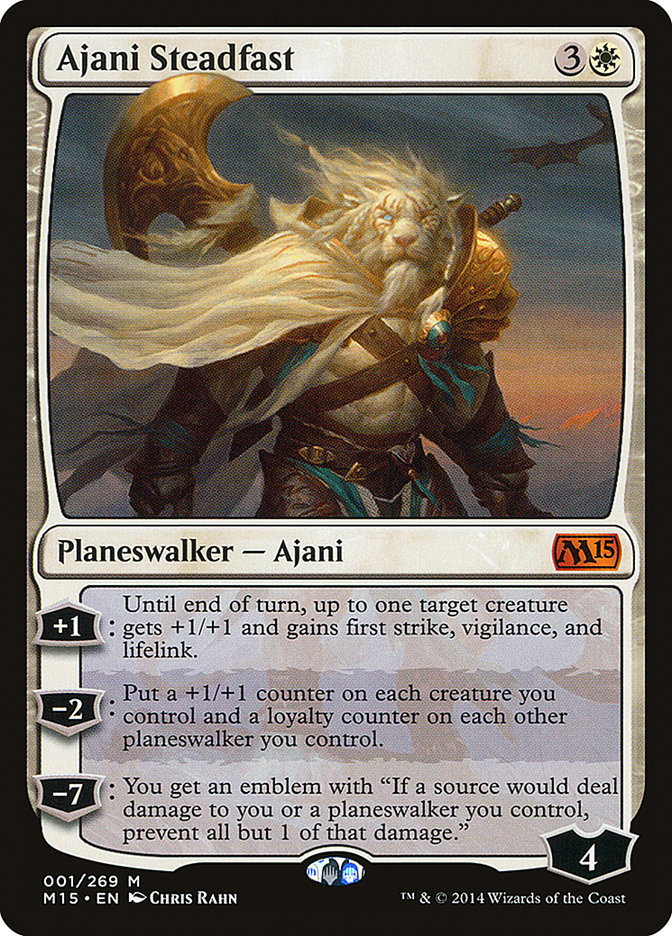
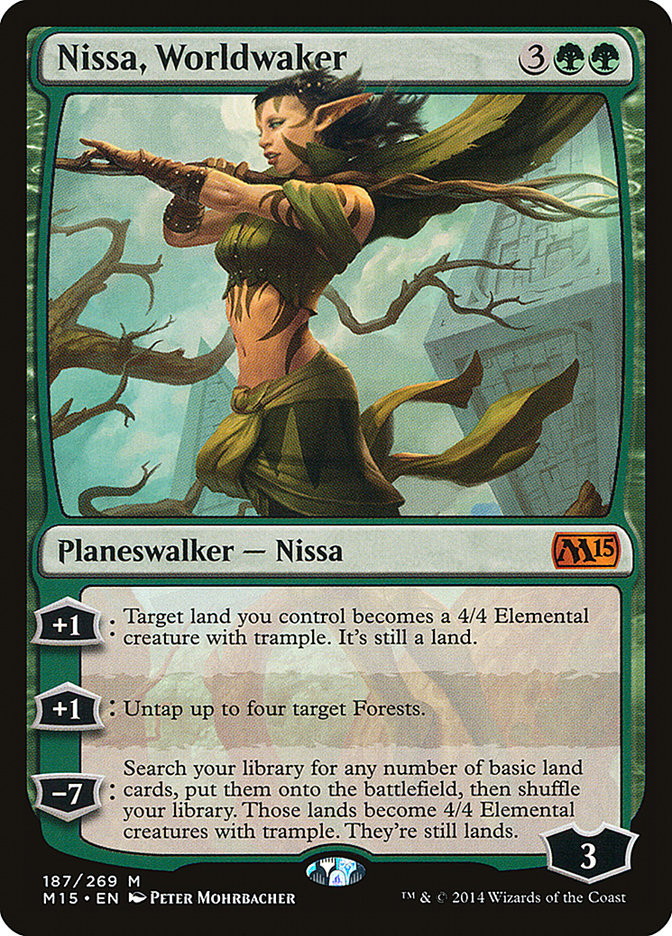
Next on my list are two more Mythic Rares – the new Planeswalkers in the set. By the looks of the art that has been revealed, we’re going to see a new Jace as well, but so far we just have new green and white planeswalkers to take a look at, which is fine by me.
There are a few things about the new Ajani that are a little off to me. First of all there is the weirdness of appearing in the set immediately following Ajani, Mentor of Heroes – what’s up with that? I don’t really know the story considerations, but couldn’t we get a new Gideon or something so our white planeswalkers don’t compete so directly?
The worst is that these two Ajanis would actually play extremely well together. Both Ajani Steadfast and Ajani, Mentor of Heroes have abilities that work well in a deck with a significant number of planeswalkers. The +1 ability on Mentor to dig for more walkers along with the -2 ability on Steadfast to add loyalty counters to the ones you find would pair very well together, and yet you can’t really use them effectively in the same deck. I understand that kind of thing happens by design sometimes, but seeing as soon Elspeth will be the only other white planeswalker in Standard, it’s kind of sad that we couldn’t get to use them all together at the same time.
The +1 and -2 abilities on the new Ajani also don’t really seem like they work particularly well in the same kind of deck. The +1 is clearly at its best when used on a large creature, since that gives you the biggest return from the Lifelink, but the -2 ability pretty clearly wants to be used in a deck with a lot of smaller creatures to distribute as many counters as possible. Now, using them in the opposite order will clearly make them more effective, but it also leaves Ajani much more vulnerable to being killed. It is pretty nice that the +1 ability on Ajani gives the creature Vigilance, so while he doesn’t protect himself on an empty board, he can still contribute to his own defense as well as enhance your offensive position as long as you already have a creature in play. That’s kind of Ajani’s thing, as it is – teamwork.
Nissa is much more capable of making an impact on an empty board. In a Mono-Green deck, she can effectively cost just one mana to cast as long as you have a bunch of Forests in play, which is pretty cool in its own right. Her ability to animate your lands makes her a great answer to board sweeper effects, and if you play her with more than five mana, you can always animate a land that started the turn in play to effectively create a creature with haste!
There are a couple of neat things to note about Nissa’s abilities. First of all, the land she animates has Trample, which means it’s great for dealing with pesky Elspeths on the other side of the table. Secondly, despite the fact that they’re creatures, they are still lands, which means that the increasingly popular Planar Cleansing will not destroy them even if does destroy Nissa herself. If you play Nissa and animate one of your lands, your opponent can’t completely wipe your board no matter what sweeper they play on the following turn. Supreme Verdict leaves you with Nissa herself, while Planar Cleansing leaves you with a 4/4 Forest.
Or, if you’re feeling tricky, you could use Nissa to animate a fancy land that has been reprinted in M15 – Darksteel Citadel!
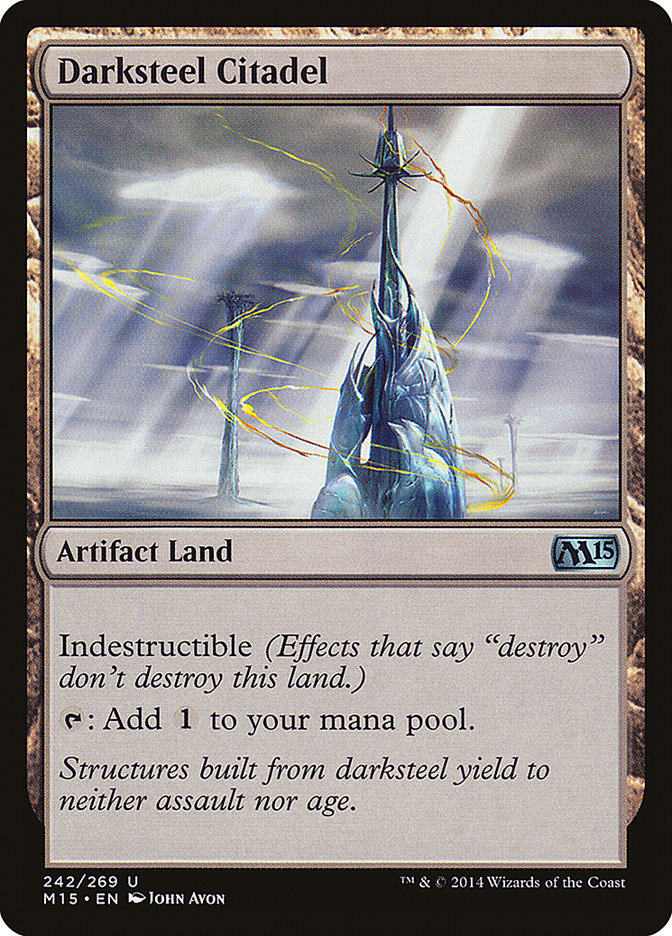
I can’t say I fully understand why this particular card has returned in the core set – perhaps Khans of Tarkir has some kind of artifact theme going on – but it certainly has powerful synergies with Nissa. Granted, playing some number of Darksteel Citadels in your Nissa deck is going to make her Forest-untapping ability that much weaker, but indestructible 4/4 Tramplers seem like they might just be worth that sacrifice. The Planar Cleansing-based U/W control decks literally cannot kill them, thanks to their lack of Detention Sphere or Banishing Light, and they certainly seem like they could give black decks some trouble as well…
And a few more individual cards that seem interesting…
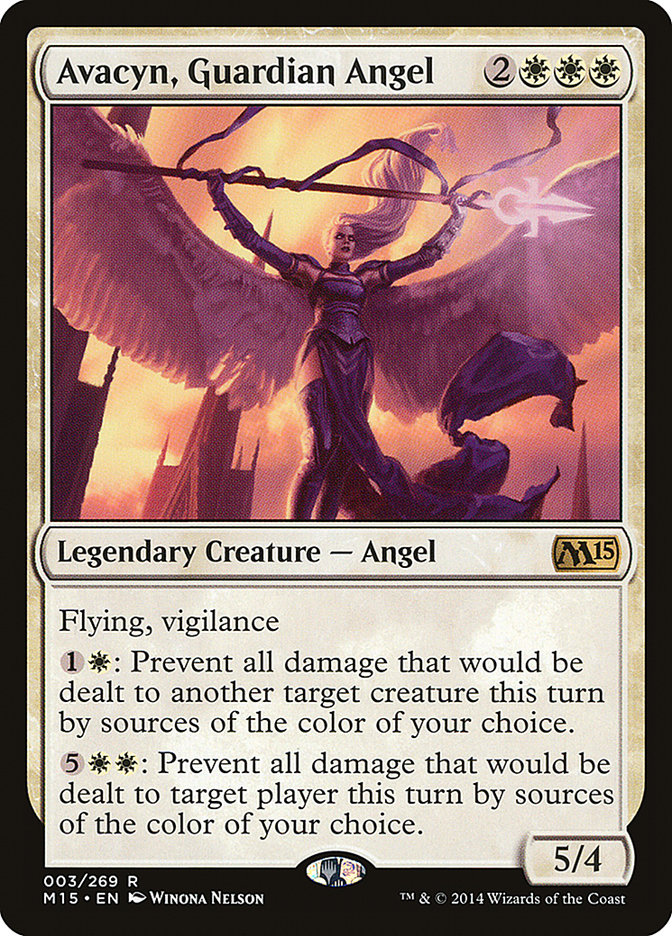
A five casting cost creature with no ETB effect that dies to Doom Blade and gets hit by Lifebane Zombie probably isn’t going to make any waves before rotation, but it’s worth noting that this second coming of Avacyn is very, very powerful. On her own, she can keep any of your creatures from dying to anything short of direct removal, and can keep you alive against almost anything as long as you have enough mana. Not to mention that she’s a 5/4 Flying creature with Vigilance, so she can end the game pretty quickly too. Not going to make a splash right away, but might in the future.
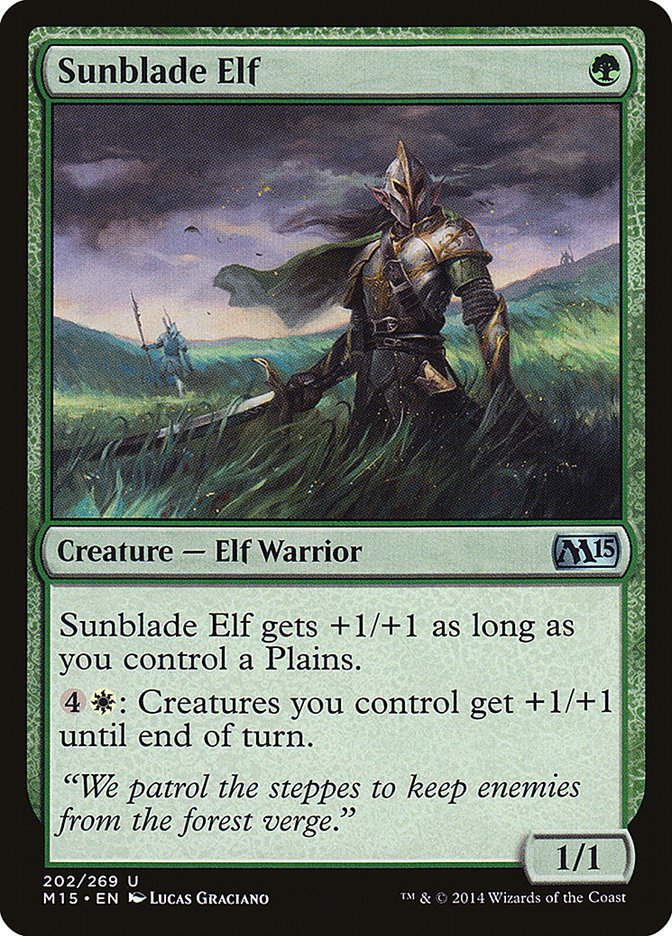
The second coming of the Kird Ape cycle is mostly kind of unimpressive, but this looks to be the Flinthoof Boar of the group. A 2/2 for G with a powerful activated ability in a swarm deck definitely has potential. G/W isn’t really lacking for quality cheap creatures right now, with Experiment One and Soldier of the Pantheon and the like, but I think this is a creature worth paying attention to.
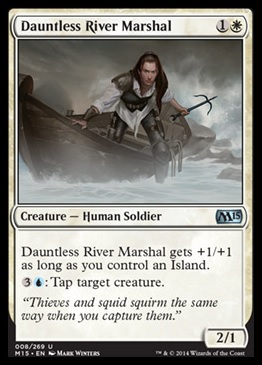
Or maybe this is the best one? A three-power creature for two mana with an activated ability to control creatures in a color combination typically lacking both of those things is worth a second look.
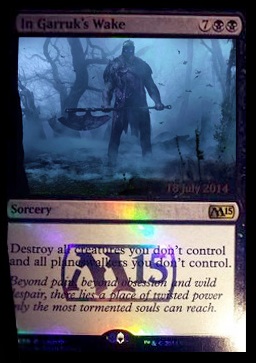
Well, we found a use for Nykthos mana in Mono-Black Devotion…
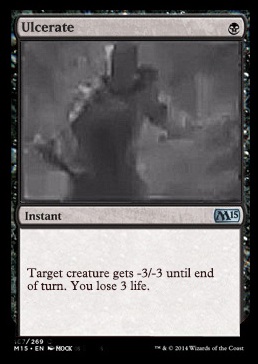
On the opposite side of the spectrum, here’s an incredibly efficient removal spell with a different kind of cost. I like that this is a card that control strategies can’t easily use, but which aggressive decks can use to press their advantage. I expect this to see a reasonable amount of play.
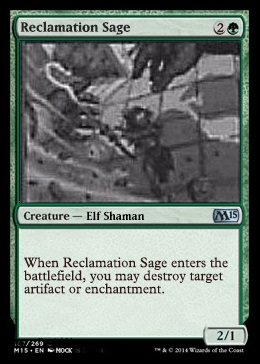
I’ve really wanted a card like this for a while. Kills Underworld Connections, Detention Sphere, Courser of Kruphix, and more. Would not be surprised to see this guy showing up in maindecks at least until rotation.
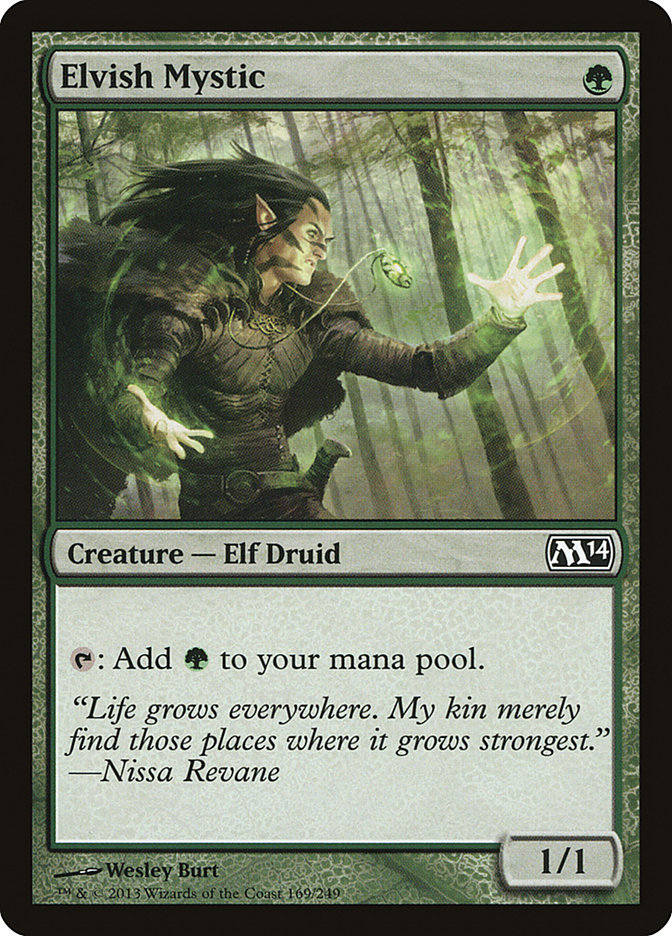
He’s back, baby. Glad I won’t have to live without a Llanowar Elf again.
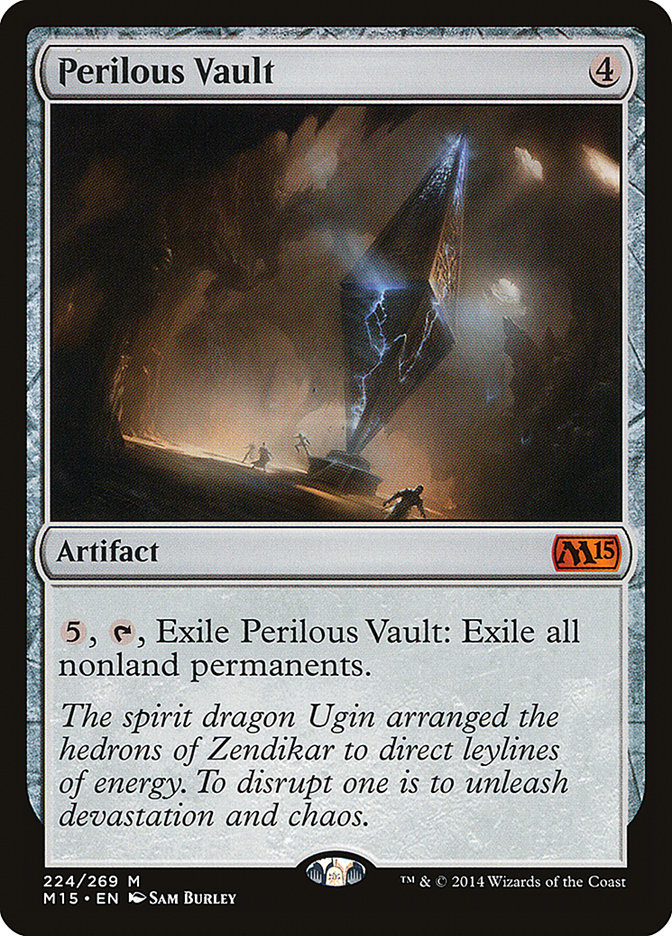
This is the second coming of Nevinyrral’s Disk, which was a huge player in its time. Granted, it’s much less efficient, doesn’t allow regeneration, and planeswalkers don’t live through it (like they do with Disk in Cube), but it’s still an interesting option for decks that are looking for a sweeper effect. I imagine such decks are few and far between nowadays, but it’s worth keeping in mind.
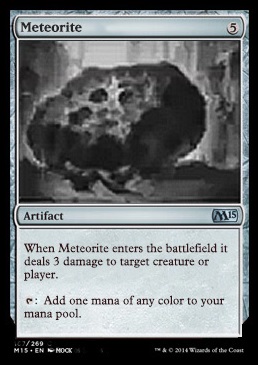
I don’t know if this will ever see play outside of Limited, but it’s hilarious, so I wanted to point it out. Artifact mana is often referred to as “mana rocks,” and this is the mana rock you drop on someone’s head before you start using it.
In any case, there’s some cool stuff in M15 that I’m looking forward to trying out. Will any of it break the stranglehold Thoughtseize has on Standard? Maybe not, but I certainly hope so.
What do you think? What are the breakout cards we’ve seen from M15 so far?
